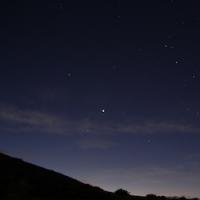Curiosity—and Its Software—on Tour of Mars

We have an ongoing curiosity for the planet Mars, especially in the popular culture of movies and books. This was reflected at the recent Mars rover landing ceremony at NASA HQ with some science fiction actor guests. Another guest was 15-year-old girl Clara Ma, whose winning essay provided the craft's name Curiosity three years ago.
The landing went as planned as the car-sized craft descended on a parachute and then a sky crane. Curiosity's successful landing was quite different from the 1999 US satellite that burned up on Mars after a metric mismatch error or the Russian satellite that was stuck in Earth orbit for two months before crashing back to Earth last January.
Due to the complexity of the software, there are nearly always errors of some kind. In 1997, the Pathfinder craft on Mars had system reset problems that needed extended debugging on a replica to fix.
Three days into Curiosity’s 36-week trip to Mars, a similar issue occurred with a reset condition when the celestial navigation was activated. This was corrected eight weeks later. Despite millions of test runs, these issues crept through and reflect NASA's risk-based approach to testing, where they focused on getting the landing right and handling strange error conditions with system resets.
While this is the most practical way to approach the testing, reoccurring system resets have a long history at NASA—they upset and almost prevented the original moon landing more than forty years ago.
The NASA website has regular updates of all the Mars activity as it happens (or, as it happened fourteen minutes earlier, due to the transmission delay). Guiding Curiosity is a challenge, as it can only be directed once or twice a day.
With the benefit of hindsight after the last Mars rover got stuck in a sand dune for five weeks, Curiosity now creates a 3D map of its surroundings to help identify hazards. Using 3D glasses with a videogame-like interface, an operator plans a simulated path that is then transmitted for the craft to follow, taking pictures along the way.
Who knows? They may even show us signs of life on Mars, fueling pop culture for years to come!

